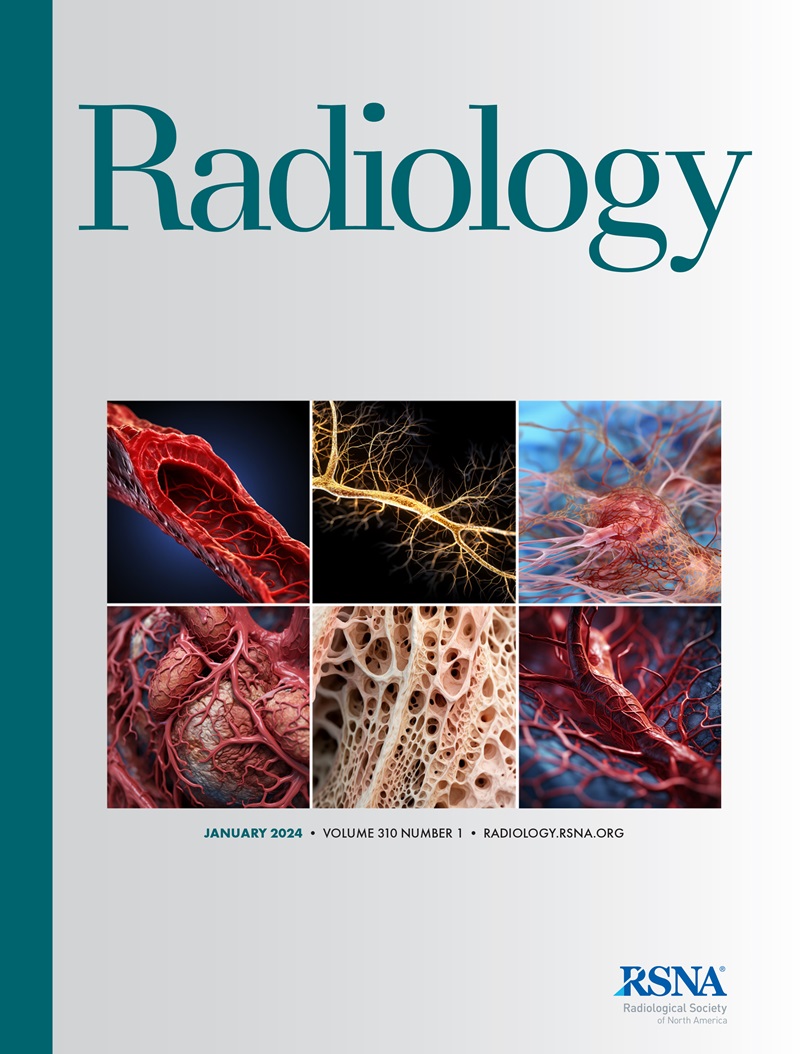Gal Ben-Arie, Tomer Krutik, Yonatan Serlin, Ran Abuhasira, Uriel Wachsman, Shlomit Tamir, Jacob Sosna, Larisa Dukhno, Tzachi Slutsky, Shlomi Codish, Ilan Shelef
求助PDF
{"title":"Crisis-Responsive Imaging: Lessons from a High-Volume Mass Casualty Incident.","authors":"Gal Ben-Arie, Tomer Krutik, Yonatan Serlin, Ran Abuhasira, Uriel Wachsman, Shlomit Tamir, Jacob Sosna, Larisa Dukhno, Tzachi Slutsky, Shlomi Codish, Ilan Shelef","doi":"10.1148/radiol.250713","DOIUrl":null,"url":null,"abstract":"<p><p>Background Mass casualty incidents (MCIs) impose extraordinary demands on health care, requiring radiology departments to rapidly adapt workflows and resources. Speed and quality of imaging are pivotal for guiding clinical decisions in these high-stakes settings, highlighting the necessity for radiology teams to learn from and improve their response in real time. Purpose To assess the radiology department response, workflow adaptations, and operational impact during an MCI following the October 7, 2023, attack in southern Israel, and to provide recommendations for future crisis preparedness. Materials and Methods In this retrospective study, use of imaging and workflow at Soroka University Medical Center, the sole tertiary and level 1 trauma center in southern Israel, were analyzed. Data from 673 injured patients in the first 24 hours included demographics, injury patterns, imaging use (radiography, CT), turnaround times, and real-time protocol adaptations. Findings were compared with a 12-month baseline. Results A total of 461 patients underwent imaging during the crisis, and 93.5% of the imaging (431 patients) was related to the MCI. The mean patient age was 29.6 years ± 14.9 (SD); 53 patients (7.9%) were age 18 years or younger and 27 patients (4.0%) were age 65 years or older. Most patients were male (<i>n</i> = 520; 77.3%). Digital radiography was performed in 351 patients and CT was performed in 164 patients, and 54 patients underwent imaging with both modalities. The median time from a CT order to completion decreased from 54 minutes (baseline) to 28 minutes (<i>P</i> = .03), whereas radiography turnaround time increased modestly, from 43 to 49 minutes (<i>P</i> < .001). Both enhanced staffing, achieving more than a fourfold increase compared with routine operations, and flexible resource reallocation, including the repurposing of nontraditional CT scanners, were key in managing the patient surge and optimizing diagnostic workflows. Conclusion These findings underscored the critical importance of dynamic in-hospital triage protocols, rapid staff mobilization, and versatile management of imaging resources. These strategies are essential components of radiology preparedness plans to improve patient outcomes during future high-casualty incidents. © RSNA, 2025.</p>","PeriodicalId":20896,"journal":{"name":"Radiology","volume":"316 3","pages":"e250713"},"PeriodicalIF":15.2000,"publicationDate":"2025-09-01","publicationTypes":"Journal Article","fieldsOfStudy":null,"isOpenAccess":false,"openAccessPdf":"","citationCount":"0","resultStr":null,"platform":"Semanticscholar","paperid":null,"PeriodicalName":"Radiology","FirstCategoryId":"3","ListUrlMain":"https://doi.org/10.1148/radiol.250713","RegionNum":1,"RegionCategory":"医学","ArticlePicture":[],"TitleCN":null,"AbstractTextCN":null,"PMCID":null,"EPubDate":"","PubModel":"","JCR":"Q1","JCRName":"RADIOLOGY, NUCLEAR MEDICINE & MEDICAL IMAGING","Score":null,"Total":0}
引用次数: 0
引用
批量引用
Abstract
Background Mass casualty incidents (MCIs) impose extraordinary demands on health care, requiring radiology departments to rapidly adapt workflows and resources. Speed and quality of imaging are pivotal for guiding clinical decisions in these high-stakes settings, highlighting the necessity for radiology teams to learn from and improve their response in real time. Purpose To assess the radiology department response, workflow adaptations, and operational impact during an MCI following the October 7, 2023, attack in southern Israel, and to provide recommendations for future crisis preparedness. Materials and Methods In this retrospective study, use of imaging and workflow at Soroka University Medical Center, the sole tertiary and level 1 trauma center in southern Israel, were analyzed. Data from 673 injured patients in the first 24 hours included demographics, injury patterns, imaging use (radiography, CT), turnaround times, and real-time protocol adaptations. Findings were compared with a 12-month baseline. Results A total of 461 patients underwent imaging during the crisis, and 93.5% of the imaging (431 patients) was related to the MCI. The mean patient age was 29.6 years ± 14.9 (SD); 53 patients (7.9%) were age 18 years or younger and 27 patients (4.0%) were age 65 years or older. Most patients were male (n = 520; 77.3%). Digital radiography was performed in 351 patients and CT was performed in 164 patients, and 54 patients underwent imaging with both modalities. The median time from a CT order to completion decreased from 54 minutes (baseline) to 28 minutes (P = .03), whereas radiography turnaround time increased modestly, from 43 to 49 minutes (P < .001). Both enhanced staffing, achieving more than a fourfold increase compared with routine operations, and flexible resource reallocation, including the repurposing of nontraditional CT scanners, were key in managing the patient surge and optimizing diagnostic workflows. Conclusion These findings underscored the critical importance of dynamic in-hospital triage protocols, rapid staff mobilization, and versatile management of imaging resources. These strategies are essential components of radiology preparedness plans to improve patient outcomes during future high-casualty incidents. © RSNA, 2025.

 求助内容:
求助内容: 应助结果提醒方式:
应助结果提醒方式:


